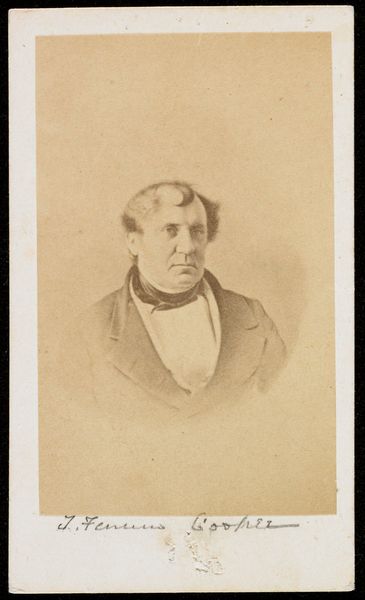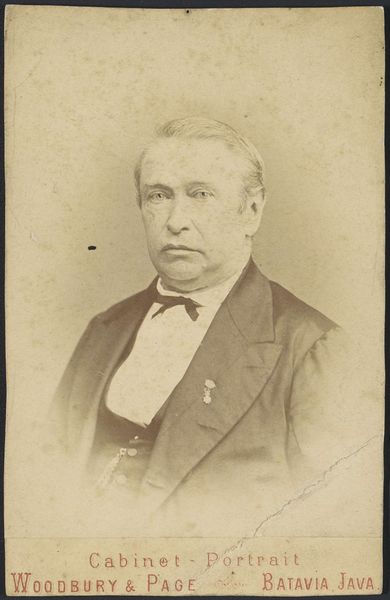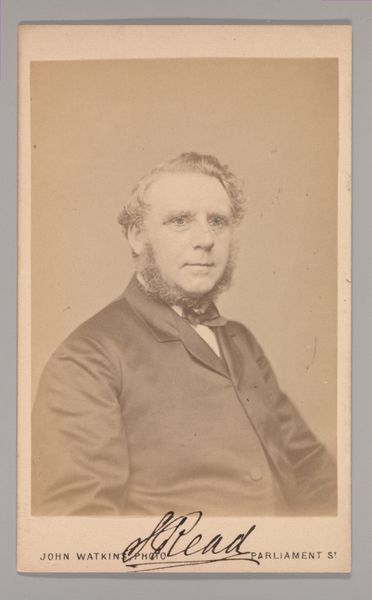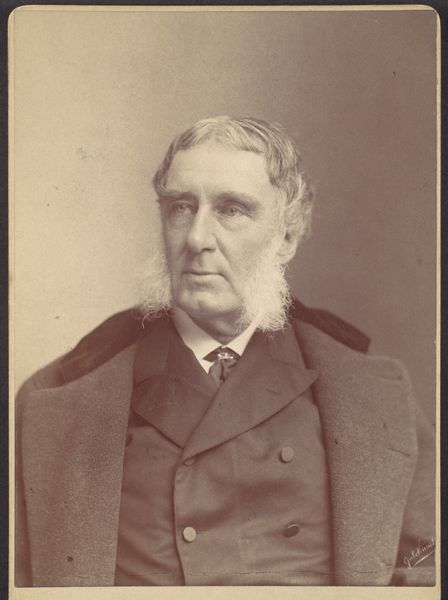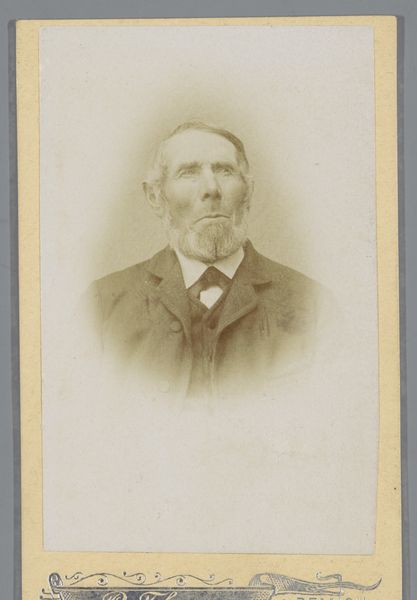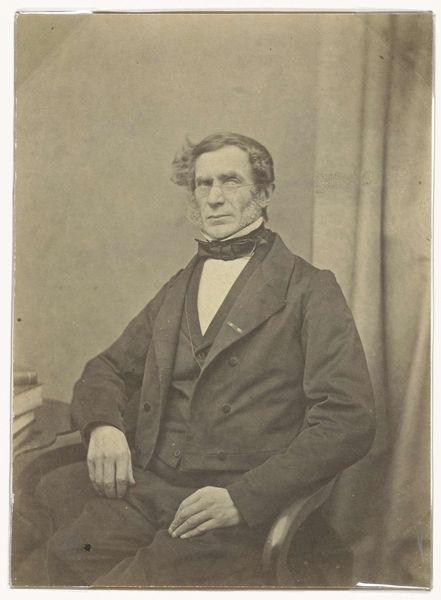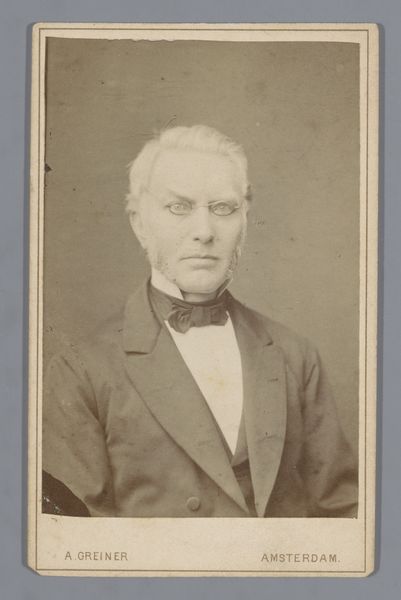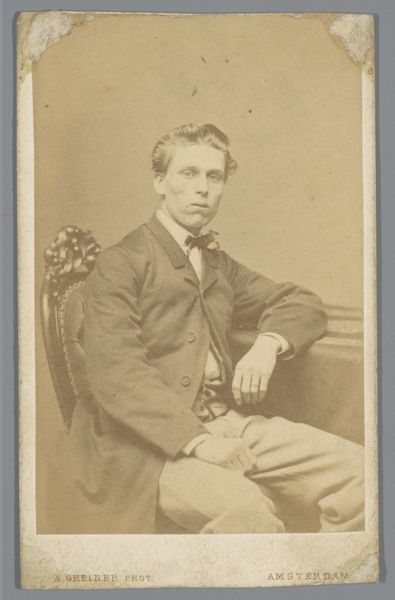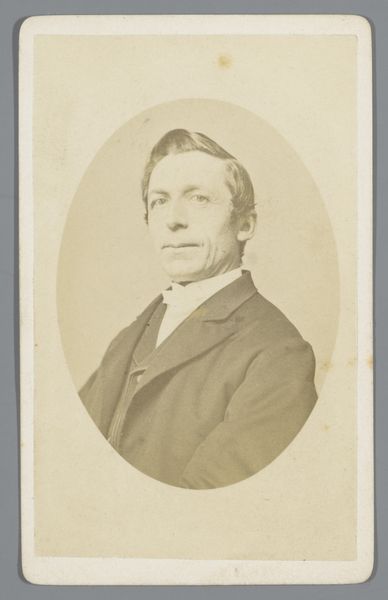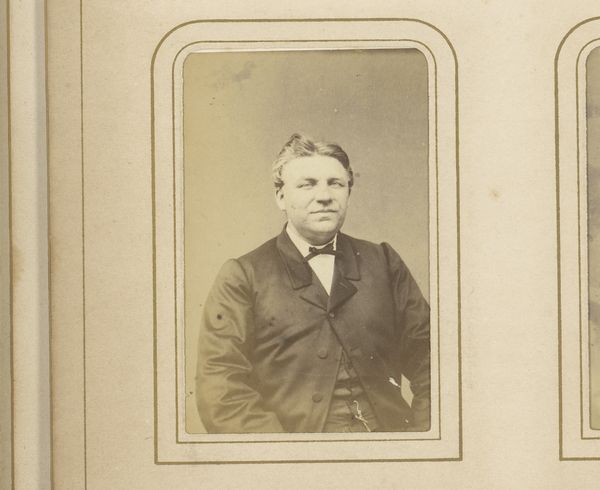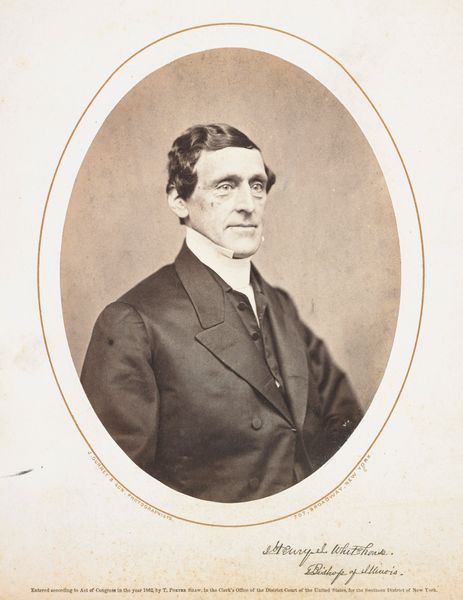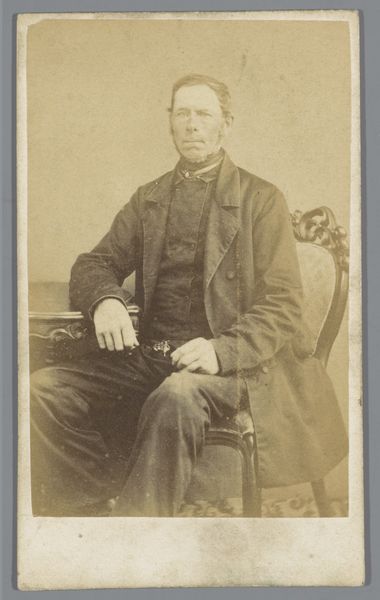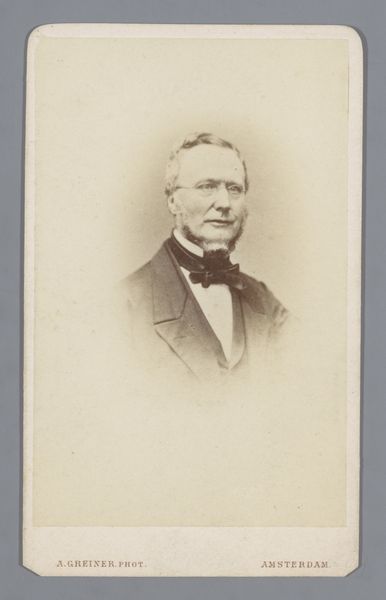
Copyright: Rijks Museum: Open Domain
This is a photograph of Mr. Hoogewerff, made by Eduard Gustav Radermacher in Rotterdam. This image encapsulates the rise of photography as a tool for constructing and reinforcing social hierarchies in 19th-century Europe. Consider the formal attire of the subject: the suit, waistcoat and bow tie were visual signifiers of middle-class status, suggesting an aspiration to respectability. Photography studios emerged as important commercial spaces where individuals could perform this identity. The photographer, Radermacher, located in a port city, would likely have made a living through such commissions. Photographs such as this were more than simple likenesses. They were carefully staged productions that reflected a specific set of cultural values. The arrangement of the subject, the lighting, and even the choice of background would have been carefully considered to convey a sense of dignity, success, and social standing. To fully understand this photograph, we might explore city directories, genealogical records, and local histories. These can reveal details about the sitter and the photographer. The meaning of art is contingent on this kind of social and institutional context.
Comments
No comments
Be the first to comment and join the conversation on the ultimate creative platform.
